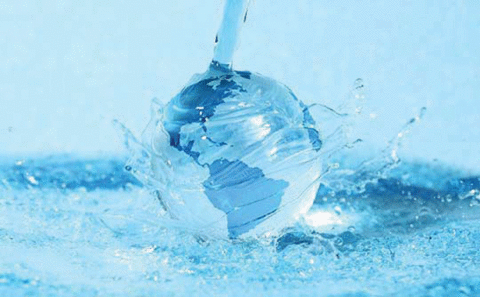Summary
The Material Measurement Lab provides measurements, standards, and data to ensure availability and sustainability of our water resources. MML supports accurate assessment of water quality, innovative water treatment technologies, and reliable water infrastructure.
Technical Focus Areas
Water Quality: Development of advanced measurement methods, reference materials, and reference data for the water measurement community to identify and measure current and emerging contaminants in water such as metals, nutrients, agricultural and industrial chemicals, disinfectants and disinfection byproducts, pharmaceuticals, antibiotics, and waterborne microbial pathogens.
Water Treatment: Development of systematic, quantitative measurements, methods, reference materials and reference data that enable manufacturers of water treatment materials, especially membranes, to improve material selection and design, for example: structure-property-performance relationships for reverse osmosis membranes.
Infrastructure Renewal: Development of standard reference materials (SRMs) and data for assessing pipeline condition, enabling effective and reliable infrastructure renewal, preventing microbial-induced corrosion, and elucidating correlations between water quality and infrastructure performance.
Description

Measurements and Standards for Contaminants in Water
Accurate measurements of contaminants in water are critical to ensure the usability and safety of our water supplies. NIST has developed Standard Reference Materials (SRMs) for validating or calibrating methods for inorganic contaminants including SRM 1640a, Trace Elements in Natural Water; SRM 1643f, Trace Elements in Water; and SRM 1641e, Mercury in Water.
MML is also interested in developing validated analytical methodology for characterizing the organic contaminants in water, which comprise a vast array of compounds including pesticides, herbicides, pharmaceuticals, and industrial chemicals. These methods will enable contaminant discovery in water sources with different contaminants profiles and facilitate the development of much-needed SRMs for organic contaminants in water.
Microbes also comprise a major class of potential contaminants in water, and many serious illnesses such as Legionnaire's disease have been linked to waterborne pathogens. MML is expanding its capabilities in genomics-and metabolomics- based characterization of microbiomes, which will be used to assess microbial populations in water.
Ultimately, MML's rigorous methods for inorganics, organics, and microbes will be used to provide the measurement foundation to support sensor validation for the water monitoring community.
Data to Support Water Measurements
MML provides Standard Reference Data (SRD) to support the water measurement community. The most notable collections are the NIST/EPA/NIH Mass Spectral Database and the EPA Tandem Mass Spectrometry Library, which comprise spectra to assist with the identification of organic contaminants in water. Fundamental thermophysical water data are also provided in other SRD collections, including the NIST Reference Fluid Thermodynamic and Transport Properties Database (REFPROP) and the NIST/ASME Steam Properties Database.
Water Prize Competitions
In addition to NIST, there are many agencies and organizations that are concerned about the sustainability of our water resources. However, even with vast research efforts in water, there are still numerous problems for which solutions remain elusive. To help find the required solutions, various water prize challenge competitions have been established to crowd-source ideas and technologies from across the globe. MML staff have been participating as subject matter experts on many water prize teams, including those offered by the USBR and the Alliance for Coastal Technologies.
Standards and Technology for Water Treatment
MML develops standards and technology that support the development of energy-efficient treatment technologies for water. One active area of research is the use of atomic layer deposition to tune the thickness and roughness of model, thin film composite polymer membranes. The model membranes are then well characterized for interactions such as ion and solution diffusion and swelling. Industry can use the model membranes to design membranes in a targeted fashion to remove specific contaminants, particularly ions as part of desalination processes. We are also synthesizing and characterizing nanoparticle-enhanced membranes to better understand their performance.
Another area of interest to MML is the development of measurement science, standards and technology for the intelligent design of sorbents for water treatment. The first step will be the determination of surface complexation models based on equilibrium constants for contaminants and adsorbent surfaces such as mineral phase, flocculants, hydrogels, and polymeric materials.
Capabilities for Infrastructure
MML has existing measurement capabilities that can be applied to assure the reliability of water pipelines and other components of our water infrastructure. These capabilities include standards for validation and calibration of fatigue detection equipment, measurement science to understand chemical and microbial corrosion processes in pipes, and computational materials science to determine properties of cement-based infrastructure materials.
Major Accomplishments
- High sales of NIST SRMs for inorganic contaminants in water to our key stakeholders including other agencies, universities, and industrial labs indicates a sustained demand for SRMs to support accurate water measurements.
- The NIST/EPA/NIH Mass Spectral Database is incorporated into the software provided by all major instrument manufacturers for GC-MS, ensuring widespread availability to spectra for organic contaminant identification.
- MML recently entered into CRADAs with two of the leading materials providers of reverse osmosis and nanofiltration membranes for water treatment.

